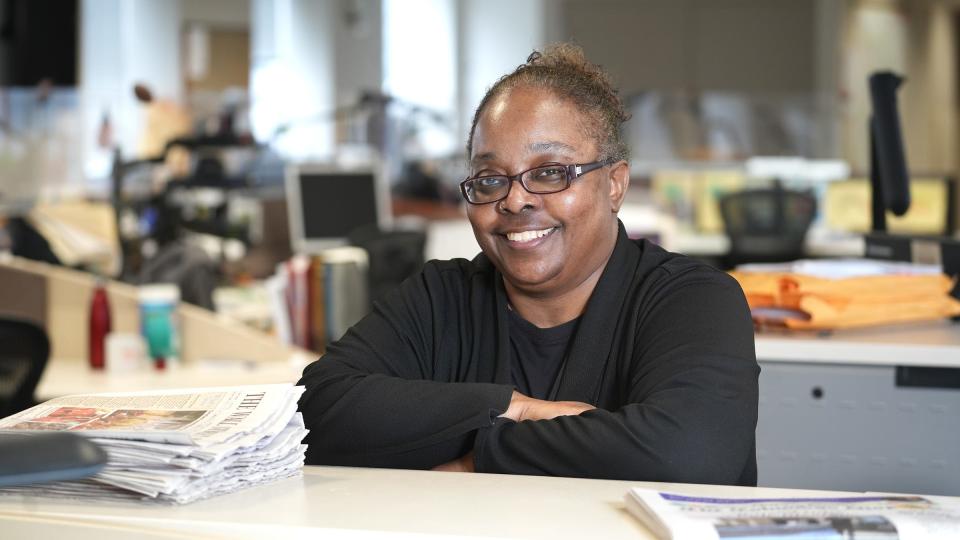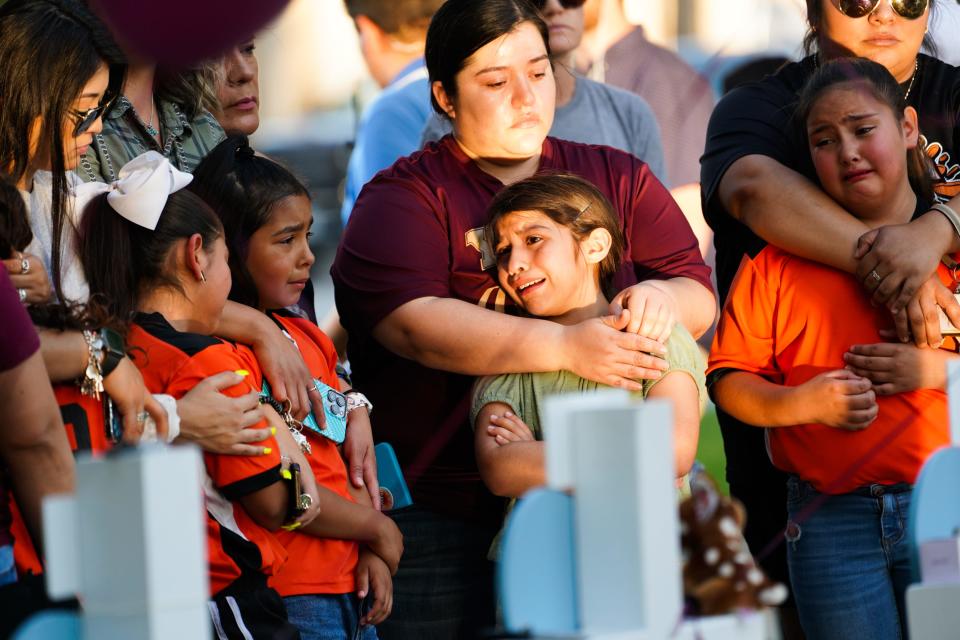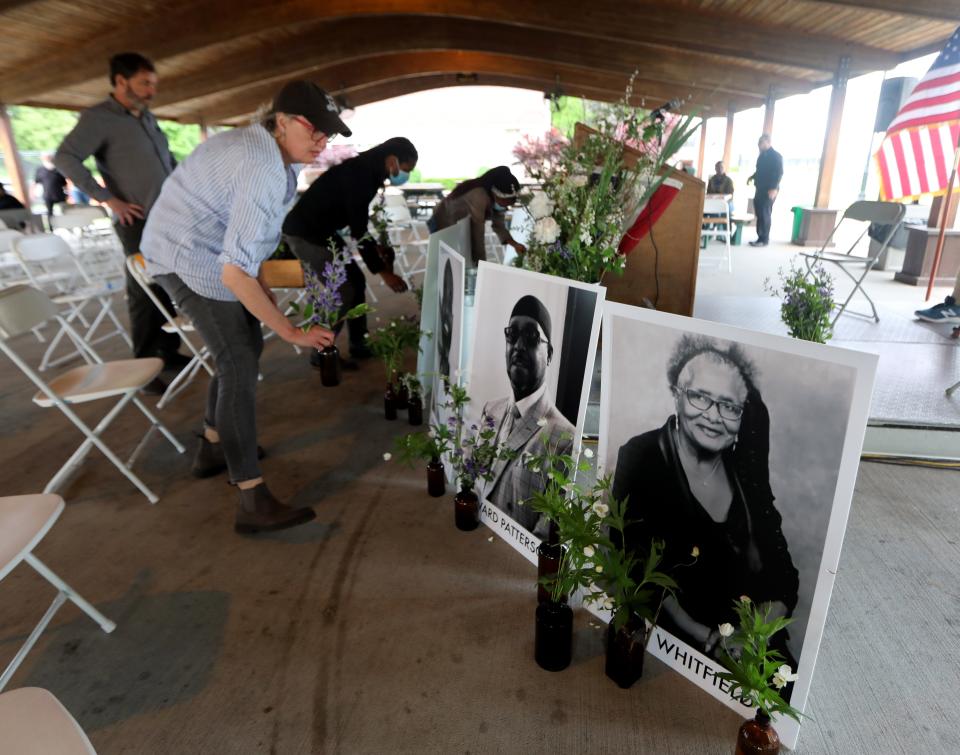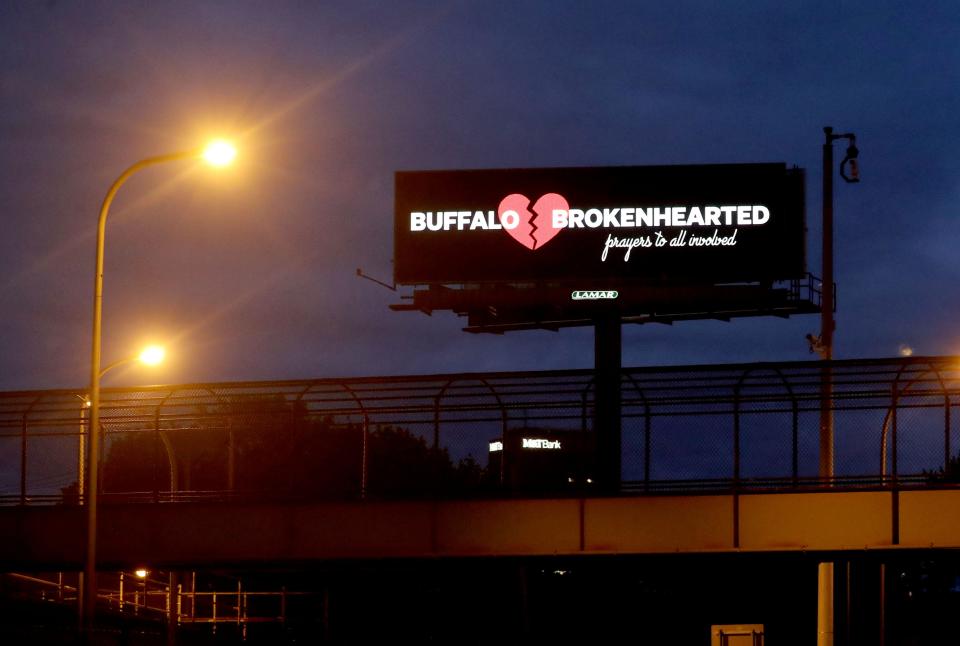Belinda M. Paschal: Mass killers often give warning signs. It's time we heed them.
Belinda M. Paschal is assistant opinon and features editor for The Dispatch.
In the wake of the shootings in Buffalo, New York, and Uvalde, Texas – and practically every other mass slaying in recent history – rhetoric is bandied about regarding the mental health of the perpetrators and how intervention might have helped prevent the tragedies.
More: 'It could be you': Mass shooters often warn people before they kill. What you can do to stop them
Each time, we hear the shooter showed “signs” – unsettling words, troubling Facebook posts, disconcerting YouTube videos, and in some cases, outright manifestos outlining their hate and desire or plans to kill.
And each time, nothing is done. After the uproar, gnashing of teeth, hand-wringing, thoughts and prayers wane, everything goes back to normal. Until the next time.

The red flags were there
More than a month before his 2012 rampage on a Colorado movie theater that left 12 dead and dozens injured, James Holmes raised alarm by telling his psychiatrist he wanted to kill people to compensate for his failure in science at the University of Colorado.
More: Colorado theater shooter James Holmes gets life plus 3,318 years in prison
The head of Holmes’ neuroscience graduate program called a campus police officer with this information, as did the psychiatrist, but the officer did little besides check to see if Holmes had a criminal record and deactivate his campus access cards. The psychiatrist declined to detain Holmes because she feared it would “inflame him.”

Nothing was done. Plenty of dust was kicked up about mental illness and curbing gun violence. Heartfelt posts proliferated on Facebook. Then the dust settled and it was business as usual. Until the next time.
The gunman who killed 17 people in 2018 at Marjory Stoneman Douglas High School in Parkland, Florida, stated on YouTube less than a year before the slaughter: “I’m going to be a professional school shooter.”
And nothing was done. More outcries – mental health this, gun control that, protests and sign-waving … then radio silence. Until the next time.
The man accused of killing 10 people at Buffalo’s Tops supermarket was held for mental health evaluation a year ago after making troubling remarks in response to a question for a class project about his post-graduation plans. The teen said his plans involved a murder-suicide, which he later dismissed as “a joke.”
More: Florida high school shooting plunges city into mourning
Was he joking in his writings — said to be peppered with racist views and claims that white Americans are at risk of being replaced by immigrants and people of color?
The nation had barely caught its collective breath when the Uvalde massacre happened. In that case, the 18-year-old accused shooter brandished two semi-automatic weapons in an Instagram photo and posted dangerous, threatening words on his Instagram and TikTok profiles.
Again, nothing was done. And 19 children and two teachers paid for this silence and inaction with their lives.
More: Bloodshed since Sandy Hook: Uvalde school shooting among deadliest school attacks in past 10 years
The list goes on and on. Nine victims in Dayton's Oregon District. Nine more in Emanuel African Methodist Episcopal Church in South Carolina. Twenty-six victims – 20 of them children between 6 and 7 years old – at Sandy Hook Elementary. Pulse Nightclub, 49 dead.
There are too many to keep up with when the U.S. has already had more than 200 mass shootings this year alone. (In fact, one was reported in Tulsa during the writing of this column.)

More: Dispatcher on Orlando nightclub 911 calls: 'My caller is no longer responding'
Removing the blinders
Research has shown that mass shooters don’t suddenly “snap.” They make conscious decisions to kill. The image of the gunman as a crazed maniac is erroneous. Shooters often plan their attacks methodically, precisely, with cold calculation. Columbine didn’t happen on a whim.
Why are we blind to the signs until it’s too late? We heed traffic signs warning us of danger ahead; why don't we heed the cautionary signs of a dangerous mind?
Perhaps it’s not blindness, but unwillingness to “get involved.” Maybe we’re too self-involved. Or apathetic. Or worse, desensitized. Maybe it’s just easier to ignore the red flags than exert the energy to take action.

More: Eight warnings behaviors of a potential mass shooter: Here's what to look for
Whatever the reason, we no longer have the luxury of turning a blind eye when those screaming crimson banners are waving right in our faces. Hindsight is 20/20, but we can no longer afford to look at the carnage through the rearview mirror.
Maya Angelou once said, “When people show you who they are, believe them the first time.”
If you see something, say something.
Belinda M. Paschal is assistant opinon and features editor for The Dispatch.
This article originally appeared on The Columbus Dispatch: Opinion: Mass shooters often show warning signs before killing

